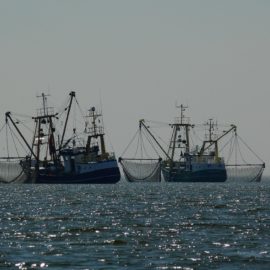
There was a start to protect the menhaden fish but it fell short of the mark.
The effort to create a buffer between Louisiana’s coastline and huge menhaden ships fell flat in the 2021 legislative session, dying last week in a House-Senate conference committee. Sponsored by Rep. Joseph Orgeron, R-Larose, House Bill 535 initially proposed a half-mile exclusion zone, with wider buffers around some barrier islands. Conservationists and recreational fishers backed the bill, arguing it would provide fragile fish nursery grounds in nearshore habitats more protection from the industry’s 1,500-foot-long nets. Menhaden industry representatives said trawling a half-mile farther from the coast could cut their revenue by 20% if captains couldn’t make up that catch elsewhere. The Senate amended the buffer to an industry-supported quarter mile. Orgeron and the House rejected that June 8, throwing the bill into a conference committee to resolve differences between the two chambers, but the legislative session ended two days later without a report from the committee. “While we were unsuccessful this session, I remain committed to seeing this legislation and common-sense conservation measures through until the end that protects both our recreational and commercial fisheries,” Orgeron said. “It’s clear there needs to be updated regulation of menhaden fishing, and I will keep up the fight for our coastal communities.”
nola.com
The debate over the fish will continue. The industry would rather have spot conservation, going for conservation where there is over fishing, conservation groups like the Coastal Conservation Commission of Louisiana, Theodore Roosevelt Conservation Partnership and National Audubon Society prefer a coast wise conservation approach.
Menhaden, also known as pogies or shad, serve a key role in the food chain for other wildlife, including treasured game fish such as speckled trout and redfish. When caught commercially, the oil-rich fish is ground up into animal feed, health supplements and fertilizers. “There’s a need for conservation here. The impact to the habitat – that doesn’t just happen in the areas where the user conflict is the highest,” said Chris Macaluso, the Roosevelt Partnership’s marine center director. “The concerns of the people who are seeing the impact these boats are having being so close to the beach – those aren’t going away.”
Some believe that no regulation are necessary.
Ben Landry, Omega Protein’s director of public affairs, thinks additional regulation isn’t “biologically necessary,” and that it places undue burden on an industry already navigating natural burdens such as tropical storms and hurricanes. “It’s easy for the environmental groups to say, ‘They can go fish somewhere else.’ That’s really not the case,” Landry said. “User conflicts are inherent, and we try our best to minimize those, but a blanket coastwide ban is not something that we thought … was scientifically supportable.” The University of Florida and the National Oceanic and Atmospheric Administration are expected to release a study later this year on the menhaden industry’s effect on fish stock in the Gulf of Mexico. Macaluso hopes it will assist in shifting the management of Gulf fisheries toward an ecosystem-based approach.
The Louisiana Wildlife and Fisheries Commission might propose a notice of intent to create a quarter mile exclusion zone along the coastline for 2022 and 2023 with a larger exclusion zone of one to three miles around Elmer’s Island, Grand Isle and West Grand Terre. This will come up up for consideration after the current legislative session is over,



